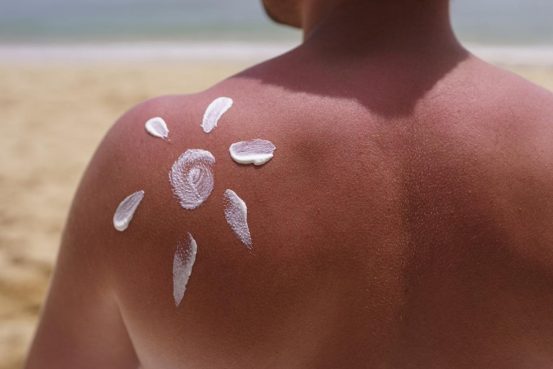
As consumers come to be increasingly smart regarding skin care, the dispute between chemical and physical sunscreens remains to be a hot topic. While both offer crucial defense against the sun's dangerous ultraviolet (UV) rays, physical sun blocks are usually admired for their mild yet efficient formulation, making them a recommended option for those with sensitive or reactive skin. The trick to their success lies in their energetic components, which produce a physical obstacle on the skin to block out UV radiation. This write-up will certainly look into the globe of physical sun blocks, concentrating on their crucial active ingredients: zinc oxide and titanium dioxide.
Unlike their chemical counterparts, which take in UV radiation and convert it into warm, physical sunscreens work by sitting on top of the skin to create a shield that disperses and scatters both UVA and UVB rays. This system is why they are often referred to as "sunscreens." The key advantage of this approach is its prompt efficiency upon application and the reduced likelihood of creating skin irritability, as the ingredients are not soaked up right into the skin.
The most renowned component in the physical sun block family members is Zinc Oxide. This giant mineral is unique in its capability to offer broad-spectrum defense, suggesting it successfully protects the skin versus the complete range of UVA and UVB rays. UVA rays are responsible for premature aging, consisting of creases and fine lines, while UVB rays are the main root cause of sunburn. By offering comprehensive protection versus both, zinc oxide plays a critical function in protecting against sunlight damage and minimizing the danger of skin cancer.
In addition, zinc oxide is renowned for its soothing residential or commercial properties. It has actually been made use of for centuries to deal with small skin irritations, breakouts, and burns, a testament to its gentle nature. This makes sun blocks developed with zinc oxide an optimal selection for people with sensitive skin, acne-prone skin, or problems like rosacea and dermatitis. Its non-comedogenic properties additionally suggest it is much less likely to block pores, a typical issue for those with oily or combination skin.
The various other key player in the physical sunscreen category is Titanium Dioxide. This normally occurring mineral is another excellent active ingredient for producing a physical barrier against UV rays. It is extremely effective at reflecting and spreading UVB radiation, giving robust protection against sunburn. While it uses great defense throughout the UVB range, it is usually considered less effective against long-wave UVA rays contrasted to zinc oxide.
Therefore, titanium dioxide is commonly made use of in conjunction with zinc oxide in sun block solutions. This mix produces a synergistic effect, boosting the total broad-spectrum defense of the item. By leveraging the staminas of both ingredients, formulators can create a sun block that supplies detailed and trustworthy protection against the sunlight's destructive rays. Like zinc oxide, titanium dioxide is additionally mild on the skin and is a suitable option for those with delicate or conveniently aggravated skin.
In recent years, advancements in formula innovation have actually addressed one of the preliminary physical sunscreen ingredients drawbacks of physical sun blocks: the thick, white actors they would frequently leave on the skin. Modern formulations currently make use of pulverized or nano-sized particles of zinc oxide and titanium dioxide, which permits a more cosmetically sophisticated application without compromising their protective capacities. This means you can delight in the gentle, reliable security of a physical sunscreen without the tell-tale white residue.
Finally, physical sun blocks provide a trusted and gentle method to secure your skin from the sunlight. Their star ingredients, zinc oxide and titanium dioxide, work in consistency to develop a physical guard that disperses damaging UVA and UVB rays. With their excellent safety account and viability for all skin types, especially delicate skin, physical sunscreens are an awesome force in the fight against sunlight damages. The following time you are Browse the sunscreen aisle, take into consideration the effective, safety, and skin-loving benefits of a physical formula.